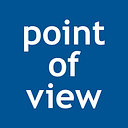Future Leader Identification - Jay Millen
As the work force demographic continues to rapidly shift from a majority of baby boomers to the next generations we are seeing some real differences within a relatively narrow 10–15 year demographic of those entering the workforce from 2005–2020. I’m frequently asked about three key issues about recruiting and retaining this emerging generation of leaders:
1)What motivates them to accept a job or stay at an employer and why is this so different?
2)What is so different about communicating with them as employees and leaders?
3)How do I identify future leaders in this generation and is different than in the past?
Before I give broad answers in each of these let me just say a broad brush answer may apply to a majority of your employees and emerging leaders in the 2005–2020 workforce but the outliers are going to be more unique and that holds true in any workforce generation.
We often forget that people’s systemic behaviors and values are shaped by the events and timing of their formative years and as a key example in this millennial and generation Z demographic there are some real issues to remember.
1) Those coming into the work force in 2008–2010 and the impact on initial employment for that cohort is radically different than the rest;
2) The advent and rapid adoption of social media and instant messaging
3) non-economic factors in their employment decisions such as climate change and global awareness.
With that backdrop in mind:
My first perspective is don’t try to recruit “the perfect” candidate that doesn’t fit with your organizational values and business identity. While you may need to work on your messaging and branding,
What really is driving today’s emerging leaders and work force 2020 is affiliation with products, purpose, and values they agree with, then the economics follow. If you have a rural based operating business with basic commodity products you shouldn’t trying to be recruit younger team members form urban schools who grow up in urban environments and vice versa .
Focus on the potential employees and leaders who align with who you are, what you do and , HOW you do it — that is what will lead to career longevity.
Secondly on the issue of communication — those entering the workforce 2005–2020 communicate personally and in how they consume information much differently than the current leadership generation and you have to alter your communication efforts accordingly.
The term social media is very broad and in reality different segments of the 2005–2020 use different “channels “ form Twitter and Instagram to Snapchat and Facebook. Get your messaging right and then “broadcast” on multiple channels.
Group and one to one communication are very different today than they were even five years ago and the 24 hour news cycle means your employees may know what has happened in your business in some cases before you do.
On the third point of future leader identification I would suggest that this isn’t a whole lot different than what we have done before, only the target group is much smaller and you are competing for them.
They tend to self-identify, have an interest in rounding assignments and diverse work responsibilities, and will step forward when asked. More importantly you have to stay engaged with them and develop them if you expect to keep them.
Assign them an informal mentor, put them on project teams earlier, and have them engage with different functional parts of the business from marketing to supply chain earlier and more often in their careers. If you don’t someone else will.
We face a really challenging point in history in the way we work and how we lead in business. Technology, demographics, and a changing world view from country to country are real challenges in how we lead and who will lead in the next decade.
Now more than ever the right emerging leader capability will be a critical differentiator in insuring a sustainable business well into the 2nd half of the 21st century.
Jay Millen
Managing Partner Board and CEO Practice at The Caldwell Partners
More from Jay:
https://signitt.com/jay-millen/
https://signitt.com/about-signitt/
https://www.scribd.com/user/464373198/In-Between-The-Lines https://issuu.com/the-flipside
https://www.coolbrandspeople.info/signitt-network
